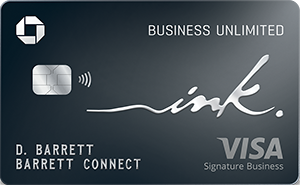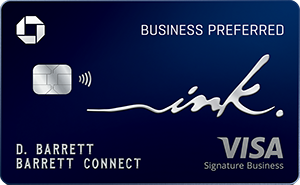Starting a business is no small feat, especially when your dream requires substantial capital to lift off the ground. I embarked upon creating a travel-inspired bag line called PAK Rêve, but like many budding entrepreneurs, I hit a financial roadblock: I needed funds — about $22,000 — to place my first large order. After navigating the tricky waters of start-up financing, I discovered a path less trodden but incredibly rewarding: Securing a loan through a community-based lender.
Finding the right lender
Securing the capital to place my first large order meant exploring various financing options. Initially, the route through traditional financial institutions ended in rejection after rejection. This was even after some of these lenders said that it was one of the best business plans that they’ve seen.
These setbacks were disheartening, but they steered me toward the Small Business Administration (SBA) loan program. Even with the SBA’s backing, the approvals were tough to come by until I discovered Greater Newark Enterprises Corporation (GNEC).
GNEC is not your ordinary lender. As a Community Development Financial Institution, its approach is holistic — it looks beyond credit scores to understand the entrepreneur’s full story. Its mission is to assist entrepreneurs in becoming economically stable, focusing on overcoming barriers to funding, especially those faced by minority groups.
What particularly aligned with my needs was GNEC’s Women Entrepreneur Fund. This program supports small businesses that are at least 51% women-owned, offering loans between $1,000 and $30,000 at reduced interest rates of 5.99%. The eligibility stress test at a rate of 10.99% ensures that applicants are resilient enough financially to endure economic fluctuations.
It ultimately granted me a $25,000 loan, which was pivotal.
Business Credit Card Comparison
Consider these business credit cards that offer a convenient and efficient way to separate personal and business expenses, simplifying accounting and tax reporting.
Additionally, business cards can provide valuable perks such as rewards points, cashback, and expense tracking tools, enhancing financial management and the potential to help save money in the long run.

Ink Business Unlimited® Credit Card |
Earn $750 bonus cash back Earn $750 bonus cash back after you spend $6,000 on purchases in the first 3 months from account opening. |
Earn unlimited 1.5% cash back on every purchase Earn unlimited 1.5% cash back on every purchase made for your business |
Purchases: 0% Intro APR on Purchases, 12 months Balance Transfers: N/A
Regular: |
|

Ink Business Preferred® Credit Card |
Earn 100,000 bonus points Earn 100,000 bonus points after you spend $8,000 on purchases in the first 3 months from account opening. |
Earn 3 points per $1 in select business categories Earn 3 points per $1 on the first $150,000 spent in combined purchases on travel, shipping purchases, Internet, cable and phone services, advertising purchases made with social media sites and search engines each account anniversary year. Earn 1 point per $1 on all other purchases-with no limit to the amount you can earn. |
Purchases: N/A Balance Transfers: N/A
Regular: |
The application process
Applying for a loan through Greater Newark Enterprises Corporation was a detailed and meticulous process, reflecting the serious commitment both the lender and borrower make. The application started online, a convenient but thorough procedure that required various pieces of critical business and personal information.
The online application was the first step in formalizing my funding request. It required the basic details of my business, such as the business name, the type of business, and the Industry NAICS Code, which classifies the business according to the North American Industry Classification System. This information helps lenders understand the sector in which the company operates and assess market risks associated with that sector.
Beyond the basic business information, the application process required several more pieces of documentation:
- Financial worksheet: This detailed my business’s financial status, including assets, liabilities, revenue streams, and other financial metrics that provide a snapshot of the business’s health and potential for growth.
- Business plan: To secure a loan from GNEC, I needed to present a solid business plan and financial projections. The process involved detailing every aspect of my business, from market analysis to operational strategies and precise financial forecasts. This rigorous exercise did more than just prepare me for the loan application; it equipped me with a clearer vision of managing and scaling my business efficiently.
- Credit score authorization: I had to permit GNEC to pull my credit report. Credit scores are often critical in lending decisions, but GNEC’s approach considers more than just this number.
- Government-issued ID: I needed a copy of a government-issued ID to verify my identity, which is a standard requirement across most financial transactions.
This is not an exhaustive list of everything I provided, but it gives a general idea. Each lender’s requirements can vary slightly, and navigating through them can be time-consuming and sometimes daunting. The application process is not just a formality but a significant step in building a financial relationship. It requires attention to detail and accuracy in providing all requested information and documentation.
Navigating the world of small business financing can be overwhelming. Here are some practical steps to secure community-based lending:
- Research local CDFIs: Community Development Financial Institutions (CDFIs) offer targeted financial services to under-served markets and populations. They are invaluable resources for entrepreneurs who might not qualify for traditional loans.
- Prepare a detailed business plan: This is your roadmap and pitch rolled into one. It should compellingly articulate your business idea, market potential, operational strategy, and detailed financial projections.
- Explore the SBA’s resources: The Small Business Administration is a treasure trove of information and support. You can use tools like their lender match program, which works as follows:
- Describe your needs: Spend about five minutes answering questions about your business.
- Get matched in two days: You’ll receive a curated list of lenders interested in your proposal.
- Talk to lenders: Discuss rates, terms, and conditions, and compare what each lender offers.
- Apply for a loan: Once you choose a lender, submit your application and necessary paperwork.
Additionally, you can google “SBA community-based lenders” in your area or check the SBA’s list of microlenders to find potential financing sources.
For those standing where I once was, remember that community-based lenders like GNEC can offer more than just money in your business bank account — they provide a network of support tailored to help minority and women entrepreneurs thrive.
Alert: our top-rated cash back card now has 0% intro APR until 2025
This credit card is not just good – it’s so exceptional that our experts use it personally. It features a lengthy 0% intro APR period, a cash back rate of up to 5%, and all somehow for no annual fee! Click here to read our full review for free and apply in just 2 minutes.
